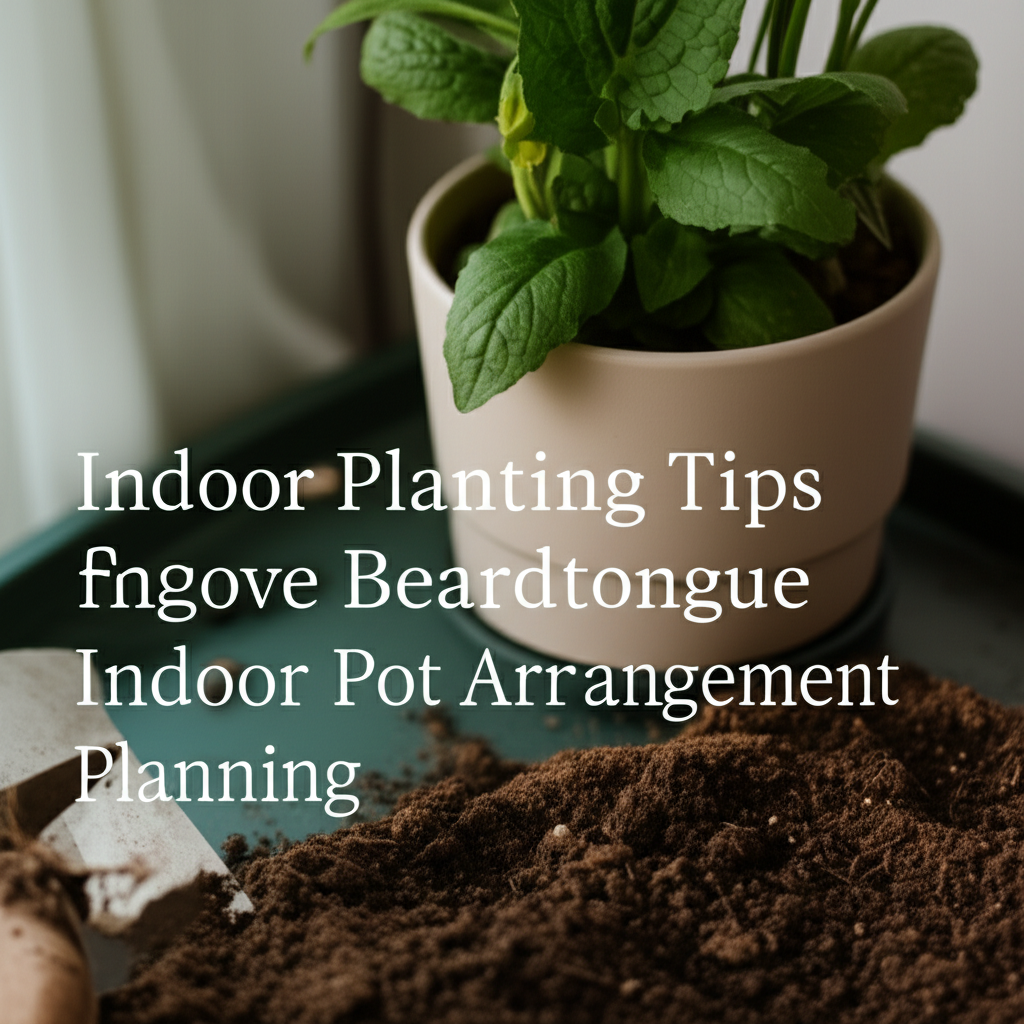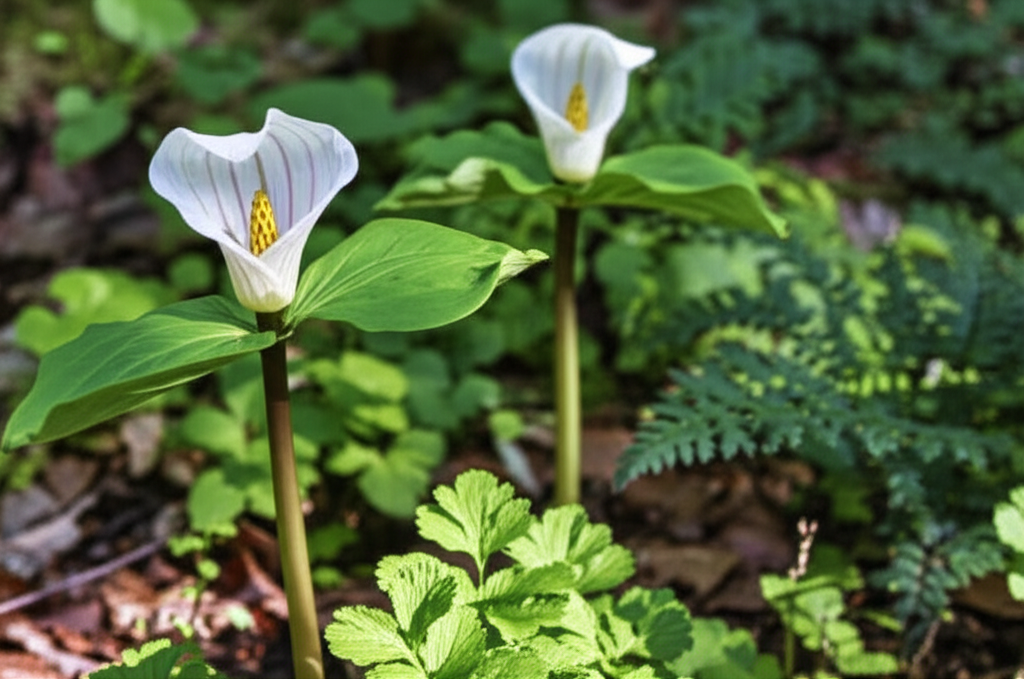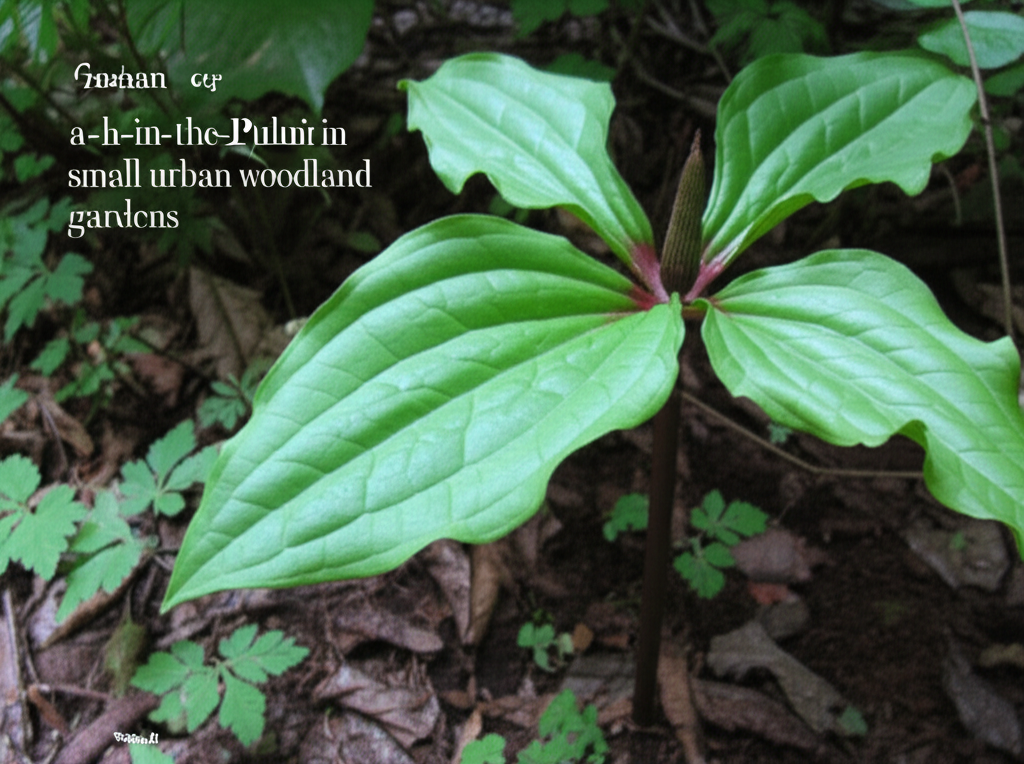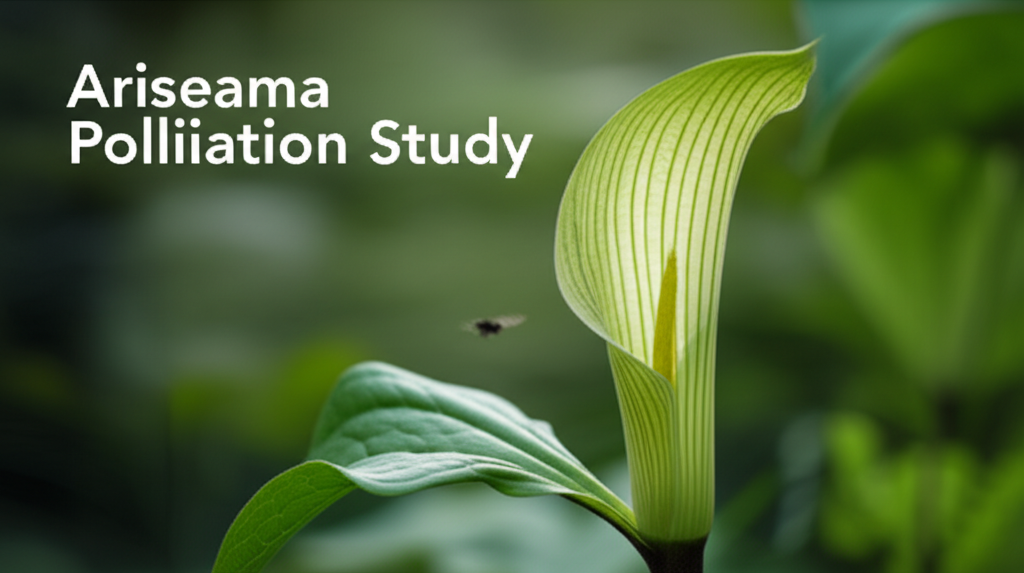Introduction to Foxglove Beardtongue for Indoor Cultivation
While often recognized for its striking presence in outdoor gardens, Penstemon digitalis, commonly known as Foxglove Beardtongue, offers a surprisingly rewarding experience when cultivated indoors. This resilient native perennial, celebrated for its tall spires of bell-shaped flowers, can bring a touch of wild elegance to any indoor space. Understanding the specific needs of this plant is crucial for a successful and beautiful pot arrangement. This guide will delve into the intricacies of planning and executing a captivating indoor Foxglove Beardtongue display, from selecting the right variety to ensuring optimal growth and bloom.
Understanding Foxglove Beardtongue: Key Characteristics
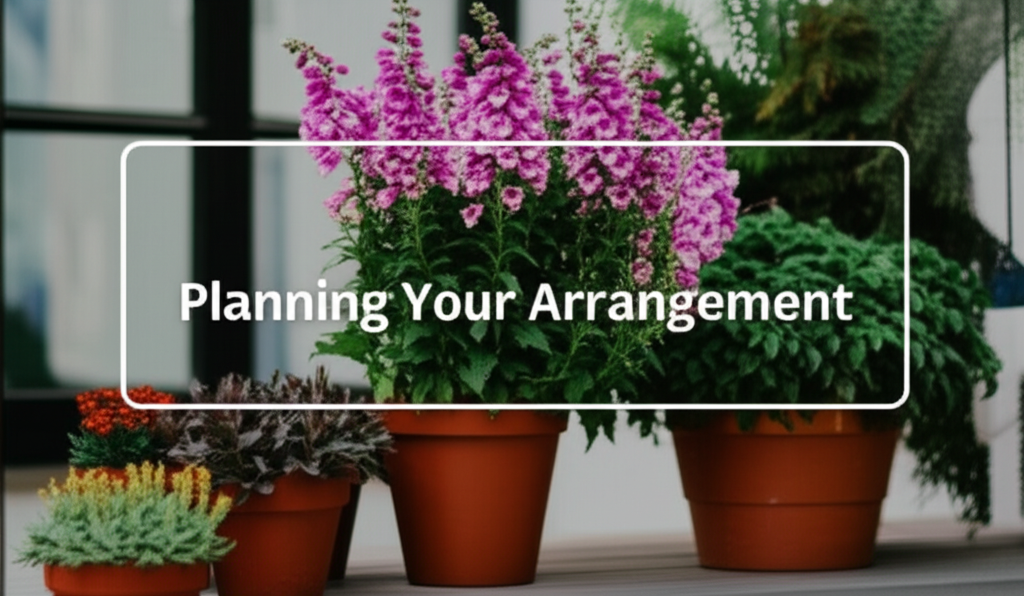
Foxglove Beardtongue is a member of the Plantaginaceae family, native to eastern North America. It’s known for its adaptability to various soil conditions and its drought tolerance once established, characteristics that translate well to container gardening with careful management.
Key Features Relevant to Indoor Potting:
- Flowering Habit: Typically blooms in late spring to early summer with upright spikes of white to pale pink or lavender flowers.
- Foliage: Forms basal rosettes of lance-shaped to ovate leaves. The foliage is semi-evergreen in milder climates, meaning it may retain some leaves through winter, offering year-round visual interest.
- Growth Habit: Can reach heights of 2-4 feet, with a somewhat bushy or clumping growth habit. This makes it suitable for larger containers or as a focal point in a mixed arrangement.
- Hardiness: While a perennial outdoors, indoor cultivation will focus on providing the right conditions for it to thrive as an annual or to maintain it through seasons with adequate care.
Selecting the Right Foxglove Beardtongue Variety for Indoor Pots
Not all Foxglove Beardtongue varieties are created equal when it comes to indoor suitability. While the species itself is robust, some cultivars offer more compact growth or are specifically bred for ornamental purposes, making them ideal for container living.
Recommended Varieties for Indoor Pot Arrangements:
- ‘Husker Red’: A popular cultivar known for its attractive deep burgundy foliage and pinkish-white flowers. The foliage adds significant ornamental value even before blooming. Its size is generally manageable for pots.
- ‘Prairie Twilight’: Features lovely lavender-pink flowers and a sturdy growth habit. It offers a good vertical element for arrangements.
- ‘Dark Tower’: This variety boasts rich burgundy foliage and pink flowers, similar to ‘Husker Red’ but often with a more compact and bushy form.
When choosing a variety, consider the available space and the desired aesthetic. For smaller arrangements or those seeking a more contained look, cultivars with a more dwarf or compact growth habit are preferable.
Key Considerations for Indoor Pot Arrangement Planning
Successfully growing Foxglove Beardtongue indoors hinges on replicating its natural growing conditions as closely as possible within a container environment. Several factors need meticulous planning.
1. Pot Selection and Size:
The container is the plant’s entire world. Its size and material significantly impact root health and moisture retention.
- Size: Start with a pot that is at least 8-10 inches in diameter for a young plant. As the plant grows, repotting into larger containers (12-16 inches or more) will be necessary to accommodate its root system and vertical growth. Over-potting should be avoided, as it can lead to waterlogged soil.
- Drainage: This is paramount. Ensure the pot has ample drainage holes. If using decorative pots without holes, a layer of gravel at the bottom is insufficient; consider using a plastic liner with drainage holes or a cachepot system.
- Material: Terracotta pots are excellent for breathability, helping to prevent root rot by allowing excess moisture to evaporate. However, they also dry out faster. Plastic or glazed ceramic pots retain moisture better but require more careful watering.
2. Soil Mix:
Foxglove Beardtongue prefers well-draining soil. A standard potting mix will likely be too dense for optimal indoor growth.
- Components: A good mix includes:
- 2 parts high-quality potting soil
- 1 part perlite or coarse sand for drainage
- 1 part compost or well-rotted manure for nutrients
- pH: Slightly acidic to neutral pH (6.0-7.0) is ideal.
3. Light Requirements:
Light is a critical factor for flowering and overall plant health.
- Full Sun: Outdoors, Foxglove Beardtongue thrives in full sun. Indoors, this translates to the brightest location possible. A south-facing window is typically the best option.
- Supplemental Lighting: If natural light is insufficient, especially during winter months or in homes with limited sun exposure, consider using grow lights. Full-spectrum LED grow lights are efficient and effective. Aim for 12-16 hours of light per day.
4. Watering Needs:
Consistent moisture is key, but overwatering is a common pitfall for container plants.
- Frequency: Water thoroughly when the top inch of soil feels dry to the touch. Allow excess water to drain away completely.
- Methods: Water at the base of the plant to avoid wetting the foliage, which can encourage fungal diseases.
- Humidity: While not overly demanding, average room humidity is usually sufficient. In very dry indoor environments, misting occasionally or placing the pot on a pebble tray filled with water can be beneficial.
5. Temperature and Ventilation:
Foxglove Beardtongue is generally adaptable to typical indoor temperatures.
- Temperature Range: Ideal daytime temperatures are between 65-75°F (18-24°C). Nighttime temperatures can be slightly cooler, around 55-65°F (13-18°C).
- Avoidance: Keep plants away from direct heat sources (radiators, vents) and cold drafts (open windows in winter).
- Ventilation: Good air circulation helps prevent fungal issues. Opening windows periodically or using a small fan on a low setting can improve airflow.
6. Fertilization:
Regular feeding will support healthy growth and abundant flowering.
- Type: Use a balanced, water-soluble fertilizer (e.g., 20-20-20 or 10-10-10).
- Frequency: Fertilize every 2-4 weeks during the active growing season (spring through summer). Reduce or stop fertilizing during the fall and winter when growth slows.
- Application: Apply fertilizer to moist soil to prevent root burn.
Designing Your Foxglove Beardtongue Pot Arrangement
Beyond the basic care requirements, the art of arrangement brings a unique aesthetic to your indoor space.
1. Focal Point Arrangements:
A single, well-established Foxglove Beardtongue can be a stunning focal point.
- Container Choice: Select a decorative pot that complements the plant’s colors and form. Consider a pot with a classic or rustic design to enhance its natural beauty.
- Placement: Position the pot in a prominent location where its height and blooms can be fully appreciated.
2. Mixed Container Designs:
Combining Foxglove Beardtongue with other plants adds texture, color, and layers to your arrangement.
Companion Plant Considerations:
When selecting companion plants, consider their light, water, and soil needs, ensuring they are compatible with Foxglove Beardtongue.
- Height and Texture: Pair taller Foxglove Beardtongue with lower-growing, cascading, or mounding plants. This creates visual depth and interest.
- Color Harmony: Choose plants with complementary or contrasting colors. For example, silvery foliage plants can highlight the pinks and whites of the flowers, while deep green foliage provides a classic backdrop.
- Bloom Times: Consider plants that bloom at different times to ensure continuous visual appeal throughout the season.
Examples of Companion Plants:
- Low-growing fillers: Creeping Thyme, Sedum ‘Angelina’, or various low-growing succulents.
- Texture and Contrast: Dusty Miller (Senecio cineraria) for its silvery foliage, or Ornamental Grasses for a feathery texture.
- Color accents: Small flowering annuals like Lobelia or Alyssum in contrasting colors.
3. Seasonal Display Planning:
Foxglove Beardtongue can be a significant part of a seasonal indoor garden.
- Spring/Summer Bloom: Maximize its display during its active blooming period with appropriate feeding and light.
- Foliage Interest: Even when not in bloom, cultivars with colorful foliage like ‘Husker Red’ can provide significant visual appeal.
- Winter Care: As growth slows, reduce watering and cease fertilizing. Provide adequate light, and be prepared for a dormant period. The plant may benefit from cooler temperatures during this time if possible, mimicking winter conditions.
Troubleshooting Common Indoor Growing Issues
Even with careful planning, plants can encounter problems. Knowing how to identify and address them is crucial.
Common Problems and Solutions:
- Yellowing Leaves: Can indicate overwatering, underwatering, or nutrient deficiency. Check soil moisture and adjust watering. If soil is consistently wet, the plant may have root rot. If soil is dry, water more frequently. Consider fertilizing if other conditions are optimal.
- Leggy Growth: Insufficient light is the primary cause. Move the plant to a brighter location or supplement with grow lights.
- Lack of Flowering: This can be due to inadequate light, insufficient nutrients, or the plant not being mature enough. Ensure it receives plenty of light and is properly fertilized during the growing season.
- Pests: Common indoor pests include aphids, spider mites, and mealybugs. Inspect plants regularly. If pests are present, isolate the affected plant and treat with insecticidal soap, neem oil, or horticultural oil.
Table 1: Key Facts and Comparison for Indoor Foxglove Beardtongue Care
| Feature | Ideal Indoor Condition | Outdoor Garden Condition | Notes for Indoor Cultivation |
| :—————— | :————————————————————- | :————————————————— | :————————————————————– |
| Light | Full sun (South-facing window), 12-16 hours total light | Full sun | Supplemental grow lights may be necessary. |
| Soil | Well-draining potting mix (potting soil, perlite, compost) | Well-draining, fertile soil (loamy, sandy) | Avoid heavy, compacted soils. |
| Watering | Water when top inch of soil is dry; allow drainage | Drought tolerant once established, prefers consistent moisture | Monitor closely; overwatering is a major risk. |
| Temperature | 65-75°F (18-24°C) daytime, 55-65°F (13-18°C) nighttime | Varies by region, hardy in USDA zones 3-8 | Protect from drafts and direct heat sources. |
| Fertilization | Balanced liquid fertilizer every 2-4 weeks during growing season | Generally less critical, but benefits from occasional feeding | Reduce or stop in fall/winter. |
| Pot Size | 8-16 inches or larger, with drainage | Not applicable (planted in ground) | Repot as the plant outgrows its container. |
| Humidity | Average room humidity is usually sufficient | Naturally high in many environments | Can benefit from occasional misting or pebble tray in dry air. |
Table 2: Steps for Potting and Arrangement, with Pros and Cons
| Step/Aspect | Description | Pros | Cons |
| :—————– | :————————————————————————————————————————————————————————— | :—————————————————————————————————————————————————————– | :—————————————————————————————————————————————————————- |
| Pot Selection | Choose pots with excellent drainage, adequate size for root growth, and material that suits watering habits (terracotta for breathability, plastic for moisture retention). | Good drainage prevents root rot. Adequate size supports healthy growth. Material choice allows for tailored moisture management. | Terracotta dries out faster, requiring more frequent watering. Plastic pots can lead to overwatering if not monitored. Decorative pots may lack drainage holes. |
| Soil Preparation| Mix high-quality potting soil with perlite/sand and compost for optimal drainage and aeration. | Promotes healthy root development. Prevents waterlogging. Provides essential nutrients. | Requires purchasing specific amendments. Incorrect mix can lead to poor drainage or nutrient imbalance. |
| Planting Process| Gently remove the plant from its nursery pot. Loosen any root-bound roots. Place in the new pot at the same depth as before, filling with prepared soil. Water thoroughly. | Ensures the plant settles well into its new environment. Minimizes transplant shock. | Risk of damaging roots if done too aggressively. Over-potting can occur if the new pot is too large. |
| Arrangement Design| Combine with companion plants, considering height, texture, and color. Position the arrangement for optimal light and visual impact. | Creates a layered, visually appealing display. Companions can enhance the overall aesthetic. Allows for a dynamic, ever-changing garden experience. | Requires careful selection of compatible plants. Overcrowding can lead to competition for resources. Aesthetic success is subjective. |
| Ongoing Care | Consistent watering, appropriate light, regular feeding, and pest monitoring. | Promotes vigorous growth, abundant blooms, and a healthy plant. Early detection of issues prevents major problems. | Can be time-consuming. Requires consistent attention to detail. Outdoor conditions are often more forgiving. |
Conclusion: Embracing the Indoor Foxglove Beardtongue Experience
Cultivating Foxglove Beardtongue indoors is a rewarding endeavor that brings a touch of natural beauty and architectural form into your living spaces. By meticulously planning your pot arrangements, understanding the plant’s specific needs for light, soil, and water, and selecting compatible companion plants, you can create a captivating display that flourishes throughout the growing season. While it demands more attention than its outdoor counterpart, the vibrant blooms and elegant foliage of Foxglove Beardtongue are a testament to the success of thoughtful indoor gardening. Embrace the challenge, experiment with design, and enjoy the unique charm this remarkable perennial brings to your home.
html
<h2>Key Facts/Comparison</h2>
<table>
<thead>
<tr>
<th>Feature</th>
<th>Foxglove Beardtongue (Penstemon digitalis)</th>
<th>Other Common Indoor Pot Plants</th>
</tr>
</thead>
<tbody>
<tr>
<td><strong>Light Requirements</strong></td>
<td>Full sun to partial shade (6+ hours of direct sunlight preferred indoors)</td>
<td>Varies widely (e.g., Spider Plant: low to bright indirect; Snake Plant: low to bright indirect)</td>
</tr>
<tr>
<td><strong>Watering Needs</strong></td>
<td>Moderate, allow soil to dry slightly between waterings. Prone to root rot if overwatered.</td>
<td>Varies widely (e.g., Succulents: infrequent, allow soil to dry completely; Ferns: consistently moist)</td>
</tr>
<tr>
<td><strong>Soil Type</strong></td>
<td>Well-draining, loamy or sandy soil.</td>
<td>Varies widely, often peat-based potting mixes.</td>
</tr>
<tr>
<td><strong>Temperature Preference</strong></td>
<td>Average room temperatures (65-75°F / 18-24°C). Can tolerate cooler temperatures.</td>
<td>Varies widely, most prefer average room temperatures.</td>
</tr>
<tr>
<td><strong>Blooming Period</strong></td>
<td>Late spring to early summer (indoors, may be less predictable).</td>
<td>Varies widely, some bloom year-round, others seasonally.</td>
</tr>
<tr>
<td><strong>Pollinator Attraction</strong></td>
<td>Attracts bees and hummingbirds (if placed outdoors or near an open window).</td>
<td>Generally less focused on attracting pollinators indoors.</td>
</tr>
<tr>
<td><strong>Growth Habit</strong></td>
<td>Upright, clumping perennial. Can grow 2-4 feet tall.</td>
<td>Varies widely (e.g., trailing, upright, bushy).</td>
</tr>
<tr>
<td><strong>Toxicity</strong></td>
<td>Mildly toxic if ingested. Keep away from pets and small children.</td>
<td>Varies widely.</td>
</tr>
</tbody>
</table>
<h2>Steps/Pros-Cons for Foxglove Beardtongue Indoor Pot Arrangement</h2>
<table>
<thead>
<tr>
<th>Aspect</th>
<th>Details</th>
</tr>
</thead>
<tbody>
<tr>
<td><h3>1. Pot Selection</h3></td>
<td>
<ul>
<li><strong>Pro:</strong> Choose a pot at least 8-10 inches in diameter to accommodate root growth.</li>
<li><strong>Pro:</strong> Ensure the pot has adequate drainage holes.</li>
<li><strong>Con:</strong> Overly large pots can lead to overwatering and root rot.</li>
<li><strong>Con:</strong> Terracotta pots dry out faster, requiring more frequent watering than plastic.</li>
</ul>
</td>
</tr>
<tr>
<td><h3>2. Soil Mix</h3></td>
<td>
<ul>
<li><strong>Pro:</strong> Use a well-draining potting mix, such as a blend of potting soil and perlite or coarse sand.</li>
<li><strong>Pro:</strong> Improves aeration and prevents waterlogging.</li>
<li><strong>Con:</strong> Heavy, compacted soil will hinder drainage.</li>
<li><strong>Con:</strong> Pure compost can retain too much moisture.</li>
</ul>
</td>
</tr>
<tr>
<td><h3>3. Planting & Initial Care</h3></td>
<td>
<ul>
<li><strong>Pro:</strong> Plant the seedling or division at the same depth it was in its original container.</li>
<li><strong>Pro:</strong> Water thoroughly after planting to settle the soil.</li>
<li><strong>Con:</strong> Burying the crown can lead to rot.</li>
<li><strong>Con:</strong> Underwatering immediately after planting can stress the plant.</li>
</ul>
</td>
</tr>
<tr>
<td><h3>4. Watering Schedule</h3></td>
<td>
<ul>
<li><strong>Pro:</strong> Water when the top inch of soil feels dry to the touch.</li>
<li><strong>Pro:</strong> Avoid letting the plant sit in standing water.</li>
<li><strong>Con:</strong> Overwatering is the most common cause of failure for this plant indoors.</li>
<li><strong>Con:</strong> Infrequent watering can lead to wilting, though it's more drought-tolerant than water-logged.</li>
</ul>
</td>
</tr>
<tr>
<td><h3>5. Light and Placement</h3></td>
<td>
<ul>
<li><strong>Pro:</strong> Place in the sunniest spot available, ideally a south-facing window.</li>
<li><strong>Pro:</strong> Rotate the pot regularly for even growth.</li>
<li><strong>Con:</strong> Insufficient light will result in leggy growth and few or no blooms.</li>
<li><strong>Con:</strong> Direct, intense afternoon sun in a very hot room might scorch leaves.</li>
</ul>
</td>
</tr>
<tr>
<td><h3>6. Fertilizing</h3></td>
<td>
<ul>
<li><strong>Pro:</strong> Feed with a balanced liquid fertilizer once during the growing season (spring/early summer).</li>
<li><strong>Pro:</strong> Avoid over-fertilizing, which can damage roots.</li>
<li><strong>Con:</strong> Excessive nitrogen can lead to foliage growth at the expense of flowers.</li>
<li><strong>Con:</strong> Fertilizing dormant plants can cause stress.</li>
</ul>
</td>
</tr>
<tr>
<td><h3>7. Pruning & Deadheading</h3></td>
<td>
<ul>
<li><strong>Pro:</strong> Deadhead spent flower stalks to encourage reblooming or prevent seed formation.</li>
<li><strong>Pro:</strong> Trim back any yellowing or dead foliage.</li>
<li><strong>Con:</strong> Leaving spent blooms can detract from the plant's appearance.</li>
<li><strong>Con:</strong> Pruning at the wrong time might remove potential flower buds.</li>
</ul>
</td>
</tr>
</tbody>
</table>
